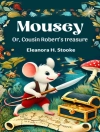In ‘The Sheriff and His Partner, ‘ Frank Harris masterfully intertwines themes of morality, justice, and companionship against the backdrop of the American West. The narrative showcases a rich tapestry of characters and vividly evokes the complexities of frontier life. Harris’s literary style, marked by its vibrant prose and sharp dialogue, immerses readers in a world where the line between right and wrong is often blurred. With a keen eye for detail and an understanding of the era’s social dynamics, he captures the essence of law and order amid lawlessness, creating an engaging exploration of both the personal and the communal aspects of justice. Frank Harris, an accomplished journalist and writer, was profoundly influenced by his own experiences as a colorful raconteur in the late 19th century. His exposure to diverse cultures and societies, coupled with his deep understanding of human nature, informs the richly developed characters within the novel. This experience forms a critical backdrop for the narrative, as he addresses moral dilemmas that resonate with audiences both historically and contemporarily. ‘The Sheriff and His Partner’ is a compelling read that invites readers to ponder the complexities of human relationships and the notions of justice. Whether you are a fan of Western literature or simply seeking a thought-provoking exploration of morality within an engaging narrative, Harris’s work is an essential addition to your reading list.
लेखक के बारे में
Frank Harris (1855–1931) was a man of letters whose colorful personality was often injected into his literary works. Born in Ireland, Harris developed a reputation for his conversational brilliance and a series of editorial positions at notable publications. His literary legacy, however, is multifaceted, encompassing his roles as an editor, journalist, and author. Among his diverse literary contributions, ‘The Sheriff and His Partner’ stands out as an example of his fiction that is characterized by a blend of realism and romanticism, featuring distinctively drawn characters and often touching upon themes of justice and individualism. Harris’s narrative style is marked by its directness and vigor, reflecting his own larger-than-life persona. His works often explore complex moral and social questions, positioning Harris as a provocative and sometimes controversial figure in the literary landscape of his time. Despite the varied critical reception of his works over the decades, Harris remains a significant, if enigmatic, figure in the tapestry of early 20th-century literature.












